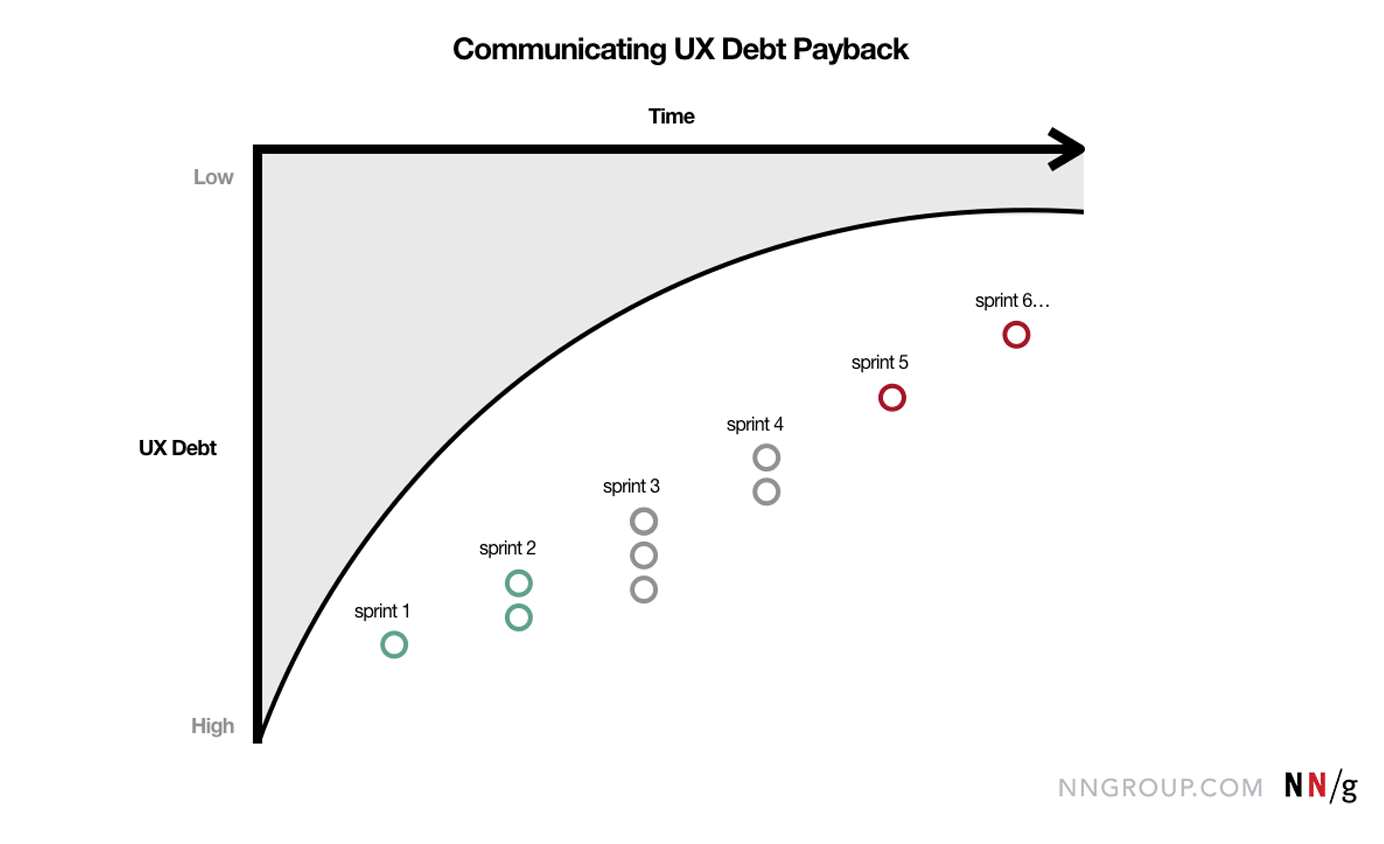User Experience Debt
Borrowing From Your Users (and your business)
In the digital world, technical debt is an extensive topic. Ward Cunningham developed this topic to explain those internal things that you don’t want to do right now, but that will hinder the future development of software projects.
Product teams, including UX/UI designers, are tied to their own various debt that appears to receive very little attention and yet have a dramatic effect on business growth. Compared to technical debt, UX debt faces the user more in nature, but both have the same vicious cycle:
- The UX team works by taking design shortcuts. The shortcuts are taken unintentionally (such as overlooking design of a dropdown function) and intentionally (such as a conflicting user flow that is not set to meet a vital product milestone).
- When these shortcuts (debts) aren’t addressed, they are gathered and become harder to fix.
- Ultimately, UX debt takes more debt, and the product leads to unusable, incoherent, and unfriendly user experience.
- The UX team, or a new product team, are then asked to identify key issues but data is conflicting due to so many UX debts having accrued and user journeys are overly complex. Shortcuts are then taken again in order to produce ‘quick fixes’ requested by stakeholders.
Why is UX debt an issue?
Compared to technical debt, UX is less obvious to the internal parties. Firstly, the technical debt is presented in a quite painful way to the UX team, such as website downtime, application crashes, or loss of productivity. The executives get frustrated with the site crashes. Secondly, the user experience is derailed by UX debts in delicate ways that the users cannot express or identify always, even when a team is making every effort to integrate user feedback aggressively.
- “Launching a suboptimal design impacts long-term market share, because many customers will give you one try and then give up when the design is too difficult or doesn’t satisfy their needs. Even if you fix their complaint later, the users won’t know, because they won’t resample your site or product once they’ve had a bad experience.
- Users will become accustomed to the bad design. Then, after you change the design, people will be forced to change their habits and hate you for that.
- Changing the design back and forth for any particular component of the overall UX will degrade the feelings of consistency and coherency.
- Your failures will live forever on the internet. Since learning is social, users will continue to be “informed” for years of your missteps by blogs, message boards, video channels, and other sources that discuss the old version. Not only will this outdated information be harmful rather than helpful to your users, it will also scare away new prospects who come across descriptions of the bad design and any awkward workarounds people had discovered and posted.” –https://www.nngroup.com/articles/ux-debt/
Getting rid of UX debt
The most incredible method to get rid of UX debt is not to take it as a first priority. Clayton Christensen has created a fake dynamic play wrote in his essay “Traps of marginal thinking.”, writing that the marginal cost of some UX debt is always minimal, but the total cost will usually far more.
To avoid shortcuts, make it a cultural value while strategising new UX releases. Well done, it can avoid shortcuts rather than taking them.
This includes the strong collaboration between developers and designers to conduct joint evaluations. “Simple” design fixes can add much more development work and vice versa. Beware not to get yourself in a difficult situation about the product decisions by making incorrect assumptions about what is easy and challenging to fix (a problem very easy to cause whilst auditing the current UX and proposing a roadmap of changes).
Paying down UX debt can feel daunting at first and will take time, but there are a few ways to resolve it while still making overall improvements to your digital products. One approach is to dedicate a specific number of story points to fix UX debt during each sprint or every other sprint. Measures should be put in place to monitor sprints and roll back changes if data and testing shows it has caused further issues for the user.
Final thoughts
As a UX team, we correctly do our work so that we can deal with the UX debt in the right way. It’s not easy to manage debt, but if managed properly, it always pays off.




